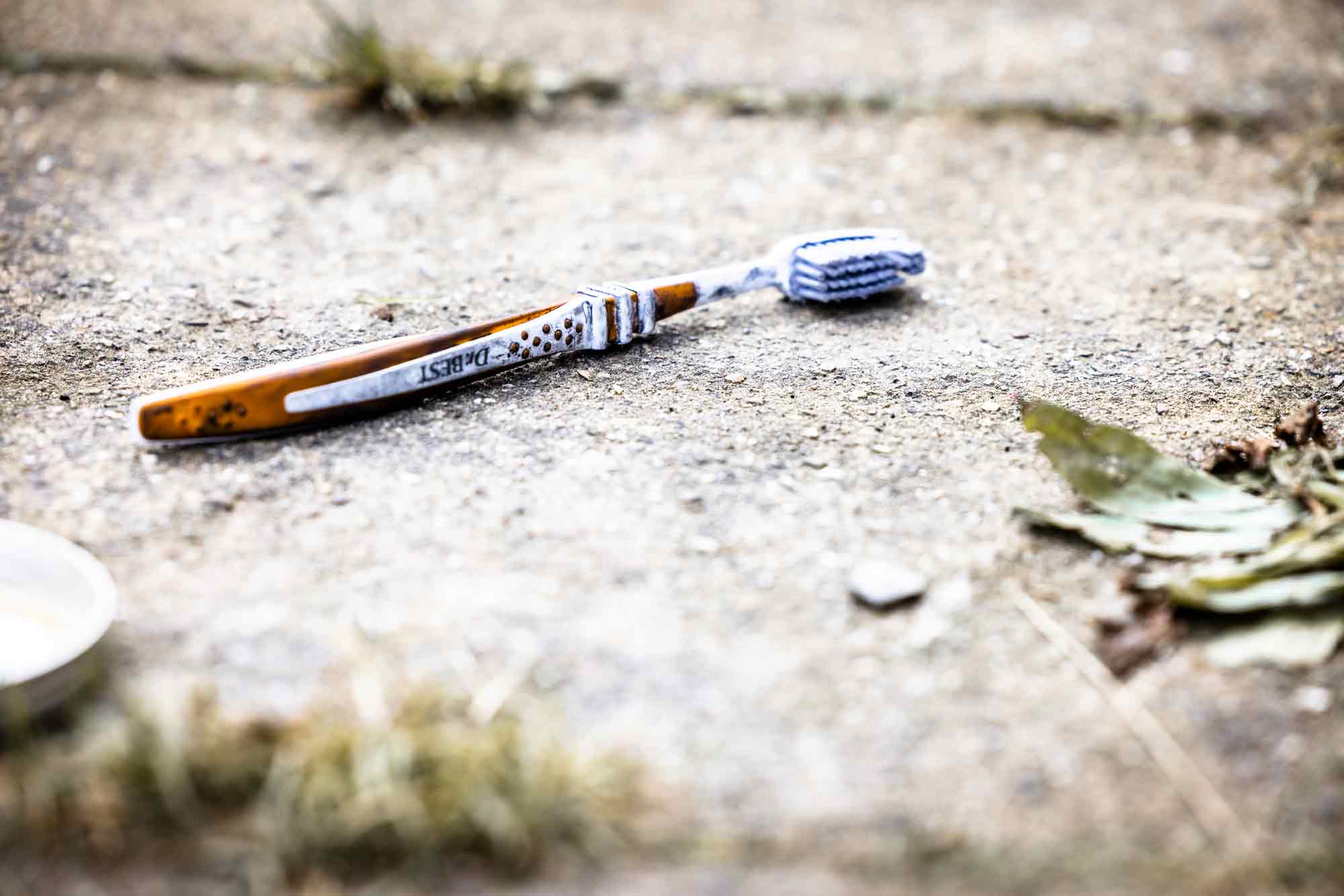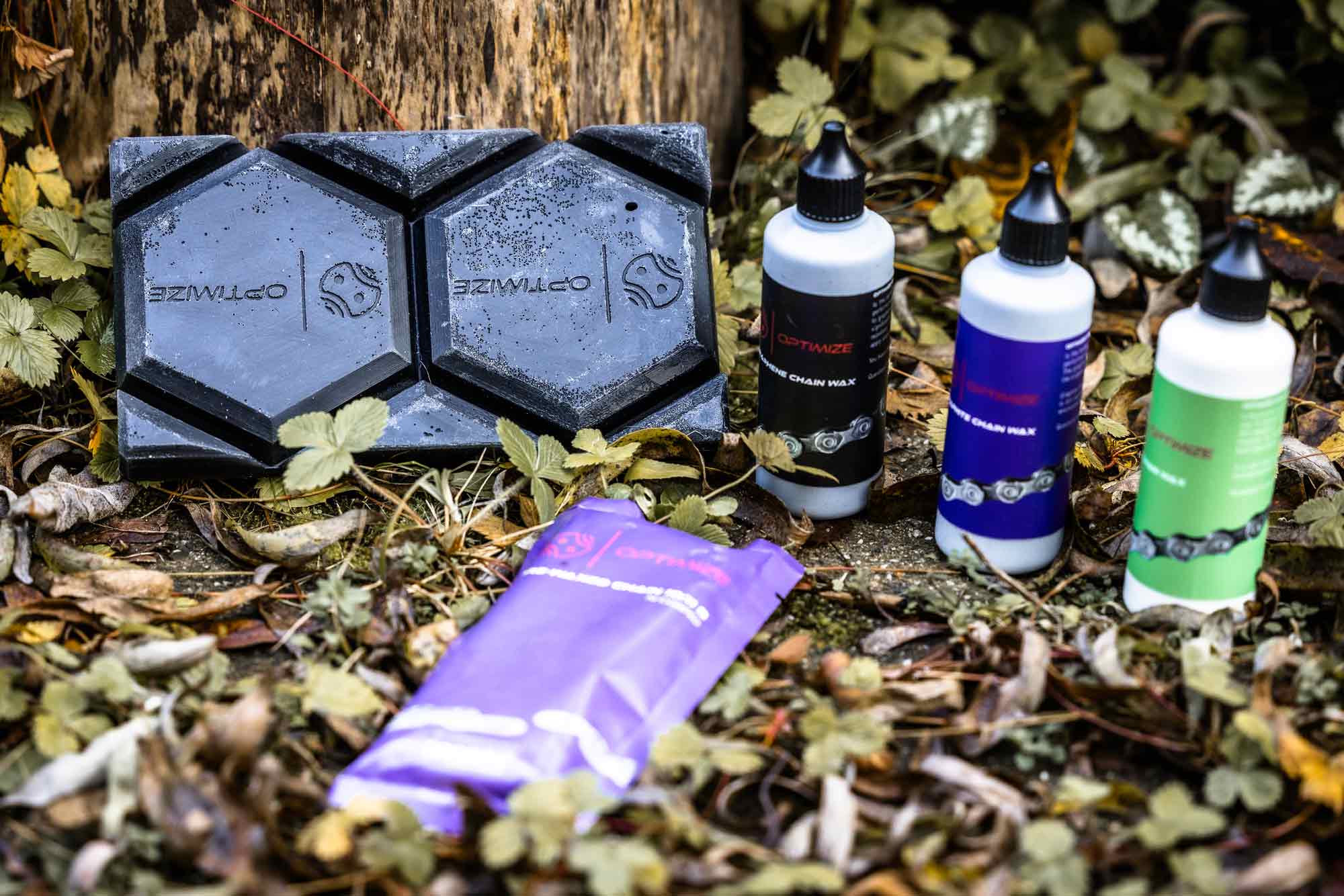Chain wax or chain oil – Overview
Why not just stick with oil?
Chain oil has proven itself and works well – doesn’t it? Nevertheless, you are apparently looking for an alternative and are asking yourself the question: chain wax or chain oil? Maybe you’re just annoyed that your chain always looks “grubby”? That you always have black oil streaks on your legs? That you have to maintain your drive after every ride in the dirt? Or are you a racing cyclist hoping for even more efficiency from your drive? Whatever your reason, there are a few arguments in favour of switching to chain wax. Chain wax is said to be super clean. Chain wax should reduce wear. Kettenwachs soll sogar mehr Leistung aus deinem Antrieb herausholen. And last but not least, chain wax is said to be more environmentally friendly than chain oil. But is all of this really true? We put the individual points to the test and tried out for ourselves how the conversion to chain wax works.
Claim 1: Chain wax is cleaner than oil
The reason for this is easy to understand. Chain oil is relatively viscous and “sticky”. It adheres to the entire chain, including the outside. It thus binds everything that comes into contact with the chain. In summer it magically attracts dust, in winter it is the mud. At some point, everything together results in a sticky black mass that you are guaranteed to recognise. The drive should then be cleaned and re-oiled at the latest.
The situation is different with chain wax. Wax is a “dry lubricant” that is relatively solid at normal temperatures and does not stick. In principle, it feels like cold candle wax, to which nothing sticks. In addition, the special application in the hot wax bath allows the wax to penetrate deep inside the chain and lubricate it exactly where the wear occurs. After a short rolling-in phase, the chain is virtually bare on the outside. Nothing sticks here – at least in theory. We have tried it out and can confirm that it works. And that’s a cool point on the pro list for chain wax: the chain stays clean even in lousy muddy weather. We do the finger test after every ride and are thrilled every time!
A small downside: Because the chain is only preserved “on the inside”, it is relatively unprotected “on the outside”, especially against moisture. This causes rust film to form quickly. This is not really a big deal – the rust quickly disappears as soon as you start pedalling. But it’s not ideal either – at least not if it happens regularly. You should therefore park your bike in a dry room and briefly wipe the chain dry after a ride in the rain. If you use your bike for commuting, for example, and your bike regularly has to stand outside in the rain throughout the day, chain wax may not be the ideal lubricant for you. You can then answer the question of whether to use chain wax or chain oil yourself.
Our conclusion: It’s definitely true – a drive with chain wax is cleaner than one with chain oil when used correctly.

Claim 2: Chain wax reduces wear
Of course, this is something that cannot be tested quickly. The various manufacturers all promise that if you lubricate with chain wax, your drivetrain should last longer. The reasons for this are at least understandable: The drive is always sparkling clean and there is little or no dirt or dust adhering to it. This naturally reduces wear. In addition, the inside of the chain is perfectly lubricated – exactly where the actual wear takes place.
If you always have a well-maintained drive, the difference to chain oil is probably quite small. But let’s be honest: who cleans their chain after every ride and pays meticulous attention to cleanliness? The typical “mess” around the drive is probably more in line with reality…
We have another point that speaks in favour of the drive lasting longer with chain wax. The reason for this is a procedure that has apparently proved successful with chain wax. As waxing the chain is relatively time-consuming, it is always worth waxing several chains at the same time. Ideally, you should prepare several chains once a year for the whole season. As soon as the lubrication wears off, you can always replace the chain straight away. The “used” chains are collected, re-waxed together at some point and are available again. This means that your drive is always in top condition and wear is therefore minimised.

In other words, the chain is the component in the drive that is subject to the most wear. A worn chain damages all other components and “destroys” the chainring and sprocket. However, if you always use a top-waxed chain and spread the wear over several chains, this should have a very positive effect on the service life of your entire drivetrain. Of course, you can also apply this principle with chain oil – but let’s be honest: who does that?
Our bottom line: We haven’t been travelling with chain wax long enough to be able to prove it ourselves. The facts and many testimonials speak for themselves in a direct comparison of “chain wax or chain oil”.” but that it’s true: A correctly maintained drive with chain wax reduces wear and extends the “life” of your drive components.
Behauptung 3: Kettenwachs holt mehr Leistung aus Ihrem Antriebsstrang
This is a point that is particularly interesting for performance-orientated cyclists who are interested in chain wax or chain oil. After all, there is a fight for every watt. And if there is still room for improvement in the drive, this can be a small but decisive advantage. But is that really the case? Is a drive with a waxed chain more efficient?
To be honest, we don’t really care about this aspect. We cycle for fun and from previous experience, the difference between a chain with chain wax or chain oil is at least not noticeable. Nevertheless, the connection behind this is somehow logical: the chain is cleaner, wear is lower, friction is lower – so the bottom line should be at least a small increase in performance. As logical as that sounds, it would of course be cooler to have proof of this assertion. We are not going to measure that. There are others – real wax nerds – who deal with such things in great detail. One of them is “the Baranski”: Marcus Baranski swears by chain wax and regularly publishes interesting articles about it on his blog. In this one, he also addresses the topic of efficiency, including a few figures. If you are interested, click here.
Our conclusion: To be honest, we don’t really care and, in our opinion, the effect is not noticeable without precise measurement. Nevertheless, it seems logical and according to many experience reports and a few reliable studies, chain wax actually gets a little more performance out of your input.
Claim 4: Chain wax is better for the environment than chain oil
Of course, this topic is particularly close to our minds: Is chain wax or chain oil better for the environment? So let’s start with the disillusioning fact: Even if almost everyone claims it, chain wax is not much better than chain oil when it comes to sustainability. We explain why this is the case below.

Paraffin wax is generally used for the production of chain wax, plus any additives. Paraffin wax is a by-product of the petroleum industry. Without crude oil (and the associated industrial processes), there would be no paraffin wax. To put it in positive terms: as long as crude oil is refined, paraffin wax is a waste product anyway – so it is not produced separately. Paraffin wax is not biodegradable or is very difficult to biodegrade. It can take years for fallen chain wax to decompose. After all, paraffin is considered non-toxic: it is not used in numerous cosmetic products for nothing (although it is not without controversy). You will also recognise it from other products, for example as the “edge” of many types of cheese.

The additives added to improve lubrication do not look any better: Graphite, for example, is often mined under questionable conditions or is also obtained synthetically as a by-product of the oil industry. You should be that honest: In terms of its production, chain wax is not really any better than chain oil. Especially not when we are talking about modern, biodegradable oils such as those from Antidot. It therefore stands and falls with the performance of the chain wax: if the wax lasts a long time and is used sparingly, this is a plus. If it also reduces wear and tear and the drive components last longer, this is another point on the list of pros with many positive effects – including less transport costs for spare parts.
Our conclusion: chain wax has nothing to do with the natural wax of the busy bees – it would have been too nice. Like chain oil, paraffin wax is produced in an energy-intensive chemical process as a by-product of the petroleum industry, is not easily biodegradable and is therefore hardly any better than chain oil. The positive effect in terms of sustainability is more indirect: less wear and tear saves resources and transport routes – and that is definitely good for the environment.
Chain wax or chain oil – The self-experiment: Converting from chain oil to chain wax

Of course, we wanted to know exactly whether we liked chain wax or chain oil better. We quickly found the right manufacturer for our project. An internet search took us straight to the Optimize website. Felix, who is just 21 years old, was fed up with imperfect wax products and decided to take matters into his own hands. His perfect recipe was created in his parents’ house in Solingen – a stone’s throw away from our office – and he has obviously built up a good reputation in a short space of time. A few phone calls later, we had Optimize chain wax in the office and were ready to get started. You can find the full story in lifeCYCLE Magazine #22. Here is our video on the subject of chain wax or chain oil and our brief conclusion.
Chain wax or chain oil – our quick summary
There is no clear answer to the question: chain wax or chain oil. Converting from chain oil to wax and the associated cleaning effort seems pretty big to us – you have to want to do it. It also requires a large amount of cleaning agent, which should definitely be disposed of as hazardous waste afterwards. Nevertheless, the result has convinced us so far! In other words: the effort is not to be dismissed out of hand – but it is worth it. Is this also the case for you? You have to decide that for yourself. If you value a clean drivetrain at all times or want to squeeze the last watt of power out of your bike and also extend the service life of your components, chain wax is probably a pretty good thing for you!
A little tip for the lazy: Liquid wax, which is simply applied to the chain in a similar way to oil, is quicker. Pre-waxed chains are also a hot tip for anyone who wants to keep the effort to a minimum.